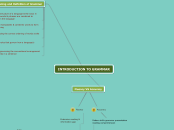a PROJECT TEAM 3 éve
374
Education in 1970s-80s
In the educational landscape of the 1970s-80s, print materials played a pivotal role in disseminating information. The selection of these materials was governed by their alignment with the planned course, the readability and appropriateness of the content for the students'









